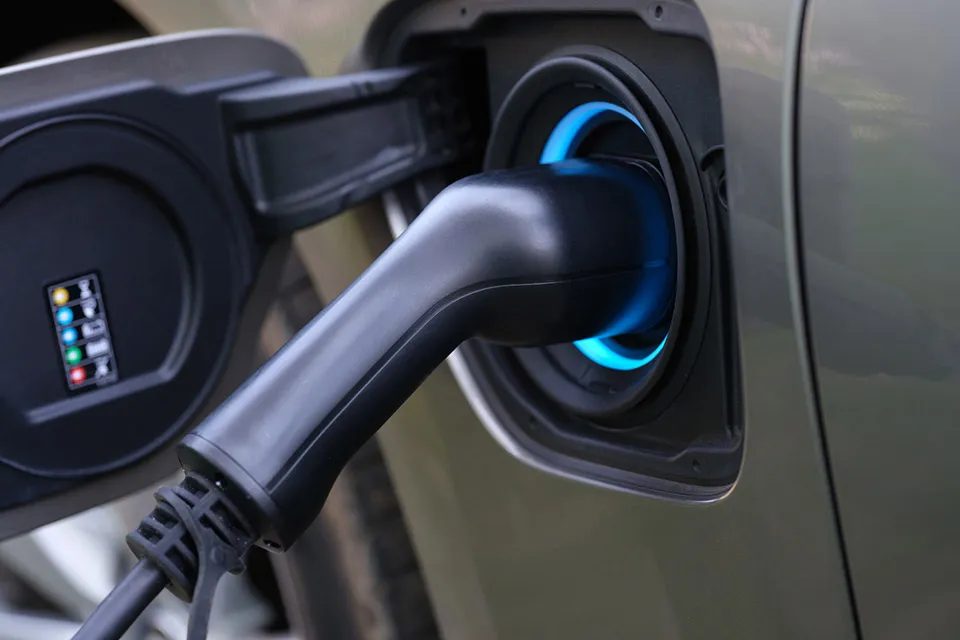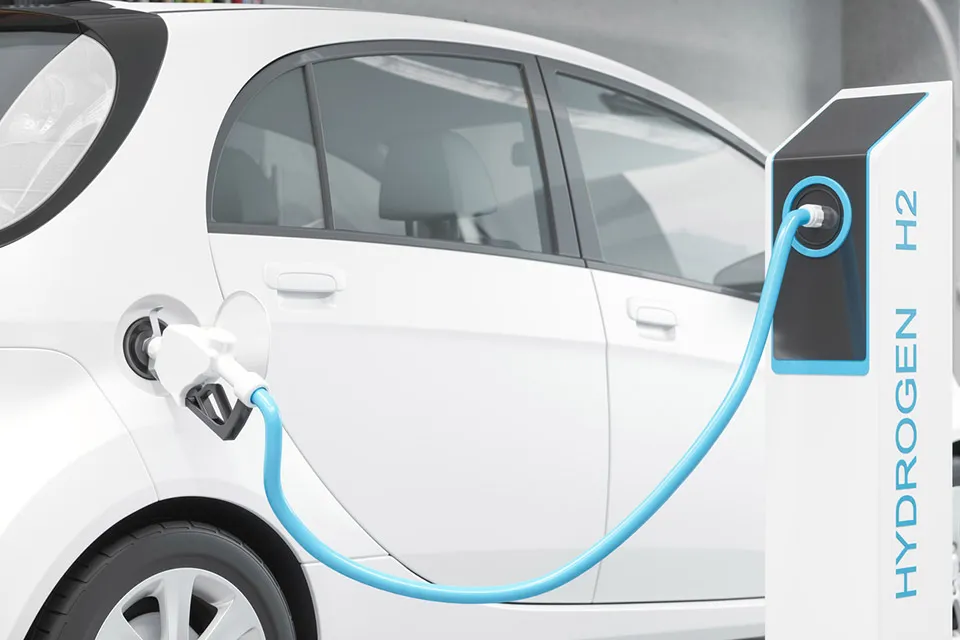What Are The 3 Main Types Of Electric Cars?

With electric vehicle ownership on the rise, more car buyers are looking at what options they have outside of the internal combustion engine vehicle market. There are three main types of electric cars including:
- All-Electric Vehicles, also known as battery electric vehicles or BEVs
- Plug-In Hybrid Electric Vehicles, also known as PHEVs (with the subtype HEVs)
- Fuel Cell Electric Vehicles, also known as FCEVs
What Is a BEV?
An all-electric vehicle, sometimes referred to as a battery electric vehicle or BEV, does not utilize any power sources aside from electricity. Instead, this type of electic car is recharged using external power stations and contains batteries that power an all-electric motor. For the most part, batteries in these vehicles are designed to be compact while still having a high overall energy density.
The material these batteries use is usually rechargeable lithium-ion and is charged using either a designated electric vehicle charging station or an at-home outlet. BEV batteries draw electricity through these outlets and convert AC (or alternating current) electricity into the type the battery can utilize, DC (or direct current). The power of these batteries is measured in kilowatt-hours or kWh and comes in various sizes.
What Is a Plug-In Hybrid?

A plug-in hybrid electric vehicle, also known as a PHEV, uses a combination of electric power and another fuel to power two engines: an internal combustion engine and an electric motor. Like an all-electric vehicle, PHEVs have a battery that can be charged externally through a charge port. Once charged, these batteries power an electric traction motor. The internal combustion engine is fueled by gasoline or a similar alternative, gaining energy from the ignition of fuel into a combustion chamber.
These types of electric cars also have systems that can help their batteries maintain power between charge-ups, like an electric generator. This device generates electricity while the vehicle is braking by transferring energy from tire rotation back into the battery. In some PHEVs, a motor generator takes care of this energy recycling process, which completes the engine and regeneration functions. Because batteries in PHEVs can be changed externally, this energy regeneration feature is more common in hybrid electric vehicles or HEVs.
What Is a Hybrid Electric Vehicle?
A subset of PHEVs, a hybrid electric vehicle (or HEV), combines a traditional internal combustion engine with an electric motor. The ICE engine functions as the primary power source, with the electric motor helping to reduce overall fuel usage. Because of this, these electric car types have lower tailpipe emissions than conventional ICE vehicles with a similar range and power.
Without external charging, the batteries in HEVs draw their power primarily through regenerative braking. This process captures the excess energy usually lost during the braking process and transfers it into the electric motor. The motor stores the energy like a generator and sends the stored energy to the primary engine during activities like accelerating, idling, and passing maneuvers.
What Is a Fuel Cell Electric Vehicle?

What sets fuel cell electric vehicles, or FCEVs, apart is their primary power source: hydrogen. Like other types of electric cars, FCEVs are far more fuel efficient and environmentally friendly than conventional internal combustion engine vehicles. For the most part, these electric car types only produce water vapor and warm air, making them a zero-emission form of transportation.
The fuel cells in FCEVs work by converting hydrogen, which is stored in a tank, into electricity for the engine. This gives them a significant fueling advantage over other electric car types, with some tanks filling in as little as four minutes. FCEVs also have a considerable driving range, with higher-end models able to travel 300 miles before they need to refuel. Like HEVs, many FCEVs use regenerative braking to recycle energy into batteries to boost their efficiency.
Types of Electric Cars Frequently Asked Questions
BEV vs PHEV: What's The Difference?
A BEV, or battery-electric vehicle, is powered entirely by electricity. This means it doesn't have an internal combustion engine or uses conventional fuels like gasoline or diesel. A PHEV, or plug-in hybrid vehicle, uses a combination of internal combustion and electricity for its propulsion. Using an external charge port and regenerative braking, a PHEV's battery and electric motor improves the vehicle's fuel economy and makes it more environmentally friendly than a car propelled by internal combustion.
Is Tesla Hybrid or Fully Electric?
Tesla does not sell a commercial hybrid, though they developed test versions for some models. Today, Tesla's entire line of vehicles is fully electrified; if you want to purchase a Tesla, it will not use any form of gasoline, diesel, or combustible fuel. If you want more information about any used model of Tesla for sale, you can do so through a vehicle history report. These reports can give you valuable information about used EVs, including their accident history, past repairs, and the number of previous owners.
How Long Do EV Batteries Last?
A rechargeable lithium-ion battery tends to have a life expectancy of between 15 and 20 years. EV batteries degrade over time due to usage, cycling, and climate. Those who drive in warmer climates need to change their batteries more frequently, as operating temperatures can largely determine how long a battery lasts. Many EV manufacturers will give warranties for their batteries lasting eight years or 100,000 miles, with states like California requiring manufacturers to offer warranties for ten years or 150,000 miles.
Which EV Lasts the Longest?
How long your electric vehicle lasts will depend on its manufacturer, battery type, age, and how it's used. For the most part, an EVs lifespan is measured by how long its batteries last. Unlike internal combustion engine vehicles, which often have many vital components that all need to be maintained to a certain level to keep the car on the road, an EV is powered by the battery alone. Some batteries can last up to two decades, while some can degrade in only a few years. How long your battery lasts depends on the quality of the battery you purchase, what climate you most often drive in, and how often you drive your vehicle.
FREE Vehicle Search
- Accidents
- Problem Checks
- Title Records
- Recalls
- Values
- Specs
-
InfoPay, Inc. (dba GoodCar) is an Approved NMVTIS Data Provider
-
-























